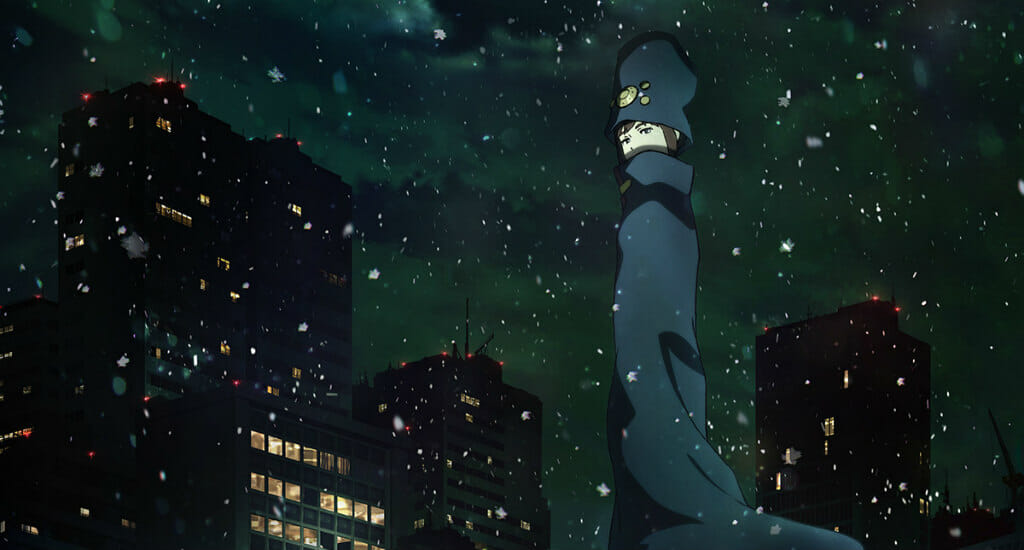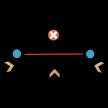
Boogiepop and Others is the 2019 anime adaptation of the series of light novels that is written by Kouhei Kadono. The first light novel was released in 1998, and since then twenty sequel novels have been written. In that time Boogiepop has had a manga adaptation, a live action film in 2000, and two anime adaptations; one in the winter season of 2000, and the latest one in the winter season of 2019. Both anime adaptations were handled by studio Madhouse. The studio behind shows such as Death Note, One Punch Man, and Parasyte The Maxim. The series was directed by Shingo Natsume, who prior to this project directed the first season of the fantastic One Punch Man. The 2019 adaptation of Boogiepop and Others ran for 18 episodes.
The 2019 series adapts four of the first five story arcs of Boogiepop, Boogiepop and Others, Boogiepop Returns: VS Imaginator, Boogiepop at Dawn, and Boogiepop Overdrive: The King of Distortion. Each of these arcs are distinct in their structure, as each arc has its own set of protagonists while characters from previous arcs make appearances throughout. Despite the show having a distinct arc-like structure there is a definite sense that there is an overarching story beneath the surface. This overarching story is so much in the background that it does make this series feel as if this season was a prologue more than anything else, setting up all the characters for a season two. However, at the time of this writing there is no season two green lit by studio Madhouse.
Boogiepop and Others is a psychological thriller, with moments where mutilation is present on screen, though it is not gratuitous, and is only a few moments in total. There is a heavy supernatural element in the show where many questions are set up, with little to no answers to any of these being provided by the end of the show. Boogiepop is a character that is said to appear when there is a threat that appears with the potential of destroying the entire world. Boogiepop’s job is to destroy this threat, and once it is done, retreat back into the subconscious of his host's mind. That being said, the show does not take place from the perspective of Boogiepop, nor does the show focus on any one character at all, rather each episode focuses on a different character, and shows the events of the narrative transpiring from a different perspective. This is an interesting way of telling the story as it allows the audience to be engaged in solving the mystery that is unfolding with the collection of characters in the show.
As stated earlier the show is set up with four distinctive arcs, and each of these arcs has a definitive beginning, middle, and ending to them. There are plants throughout the show to a looming threat that exists in the world peppered in, and it is only in one of these arcs when this threat is somewhat in the forefront of the narrative. There is an almost detective-story-like feel to the narrative as, as an audience member you try to connect the dots as much as possible with the clues that you are given, and when they reveal the answer at the end of the arc you do not feel cheated, as they either say or show the evidence in the show itself. Each of the antagonists in the show has an understandable motivation behind their actions; there are some that you end up feeling sympathy towards, some that you dislike outright, and some that are traveling the path of evil as a means of doing good.
There is a healthy cast of characters that appear in the show, however they are so sporadic in their appearance that the only two that end up being interesting in their own right are the titular Boogiepop and Kirima Nagi. There are likable characters in the cast, intelligent characters, introverted characters, exuberant characters, and the like. Each of them are compelling on their own right when they are on screen, and there is a logic to their actions. They are also quite wellwritten, as you start to feel for the characters, even the antagonists, when each arc comes to its conclusion.
While the quality of the artwork on the frame is quite high through a majority of the show, what ended up being quite disappointing is the number of times a still frame is used on screen. There were multiple times in every episode where we are shown a still image, or a shot, where the camera is focused on the character that is not speaking so that the animators did not have to animate the characters that are speaking. During these moments of conversation, there is a stiffness to the characters that is disheartening to see, especially from Madhouse. However, as more details of the state of the anime industry comes to light it is not surprising. Conversely, when the show needs to show movement, especially when there is a chase or a fight scene, Madhouse does show off their calibre by producing a beautiful segment of animation of high standard with a high level of sakuga.
The soundtrack by Kensuke Ishio is fantastic. There is a combination of arrangements centred around the piano, as is the case with his soundtrack for A Silent Voice, and there are tracks with electronic arrangements, and this variety makes the soundtrack an interesting listen. The highlight, personally, is the opening, which I ended up watching with every episode rather than skipping it, as there is a certain gothic feel throughout in the song shadowgraph by MYTH&ROID that is accompanied by a selection of fantastic visuals. It is even arguable that the opening was the most exciting part of the anime, save for a select number of fight sequences.
One of the biggest detriments to the show is the tendency it has to over explain itself so much so to the point that it turns from being interesting to confusing. The setups for the concepts that are being explored are interesting in their own right, however there are instances where characters are explaining things to the point of redundancy, and so, that, combined with the uninteresting animation makes these scenes a chore to get through. While the explanations make everything intelligible, on a couple of the arcs, while it was satisfying for a moment, you cannot shake the feeling that it was setting the world and characters up for something larger that is looming in the horizon, which ends up depriving the audience of the satisfaction it gave to begin with. At times it also seems as if the concepts of the anime are far larger than what the anime can handle.
While this is a show that I personally enjoy, this is not one that I can recommend. The furthest that I am comfortable going is as far as a recommendation is watching the first episode. The first episode is a concise reflection of what the rest of the show is going to be, and if you liked the first episode, the chances of you enjoying the rest of the show is better. Boogiepop and Others is available to watch on Crunchyroll.
About the Creator
BoblobV2
Writing about anime, and anything else I find interesting.






Comments
There are no comments for this story
Be the first to respond and start the conversation.